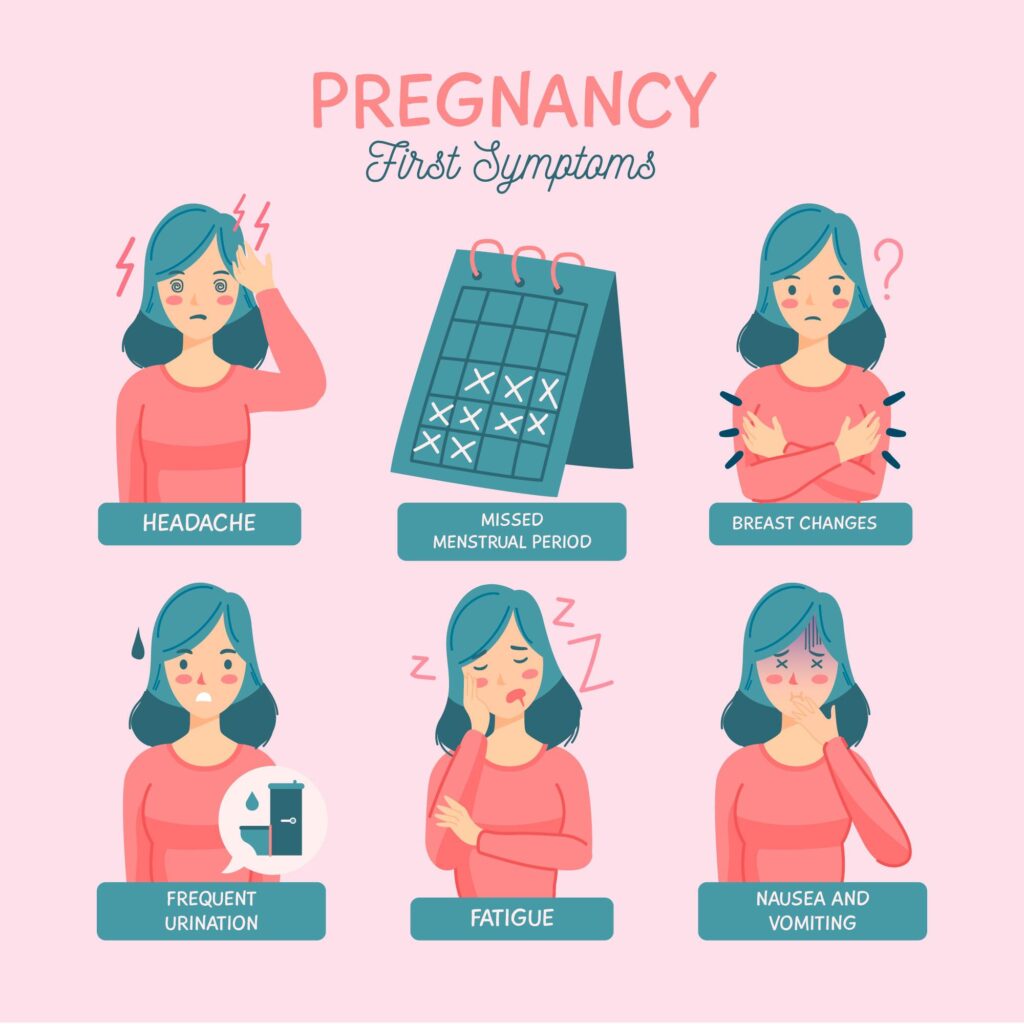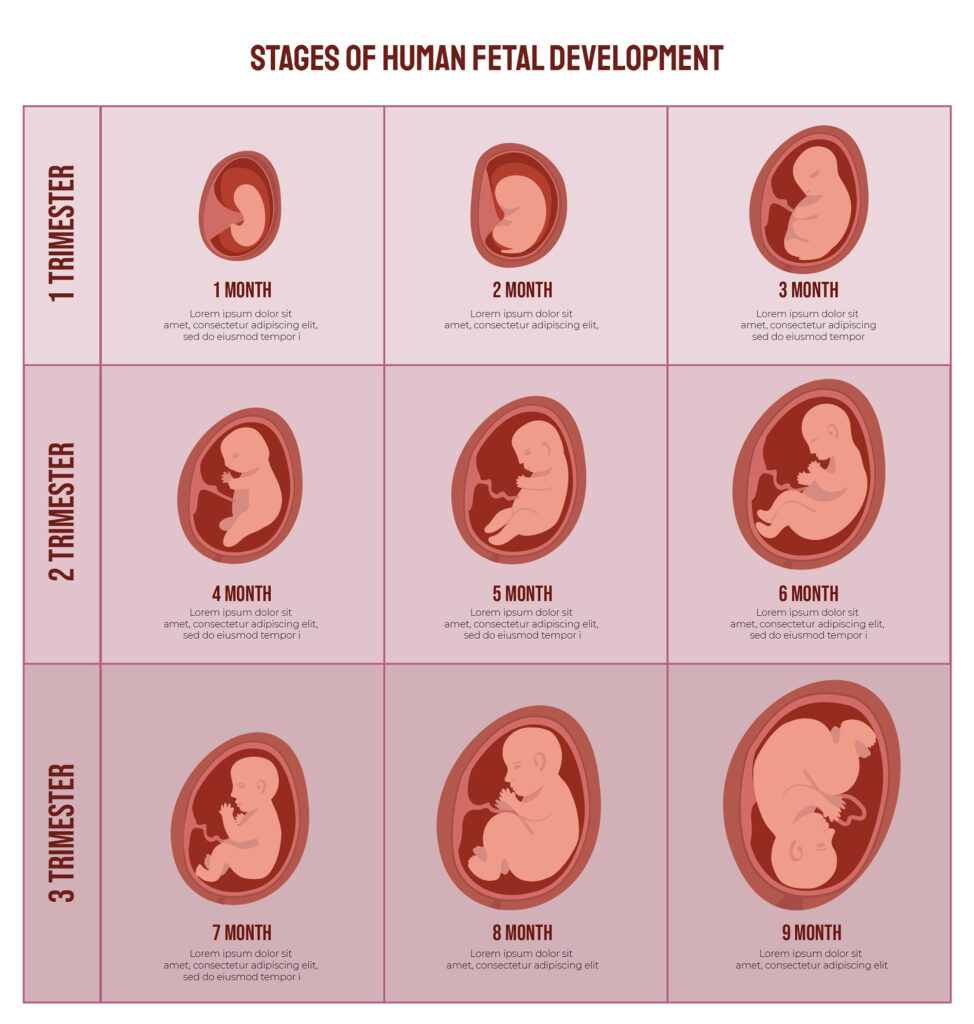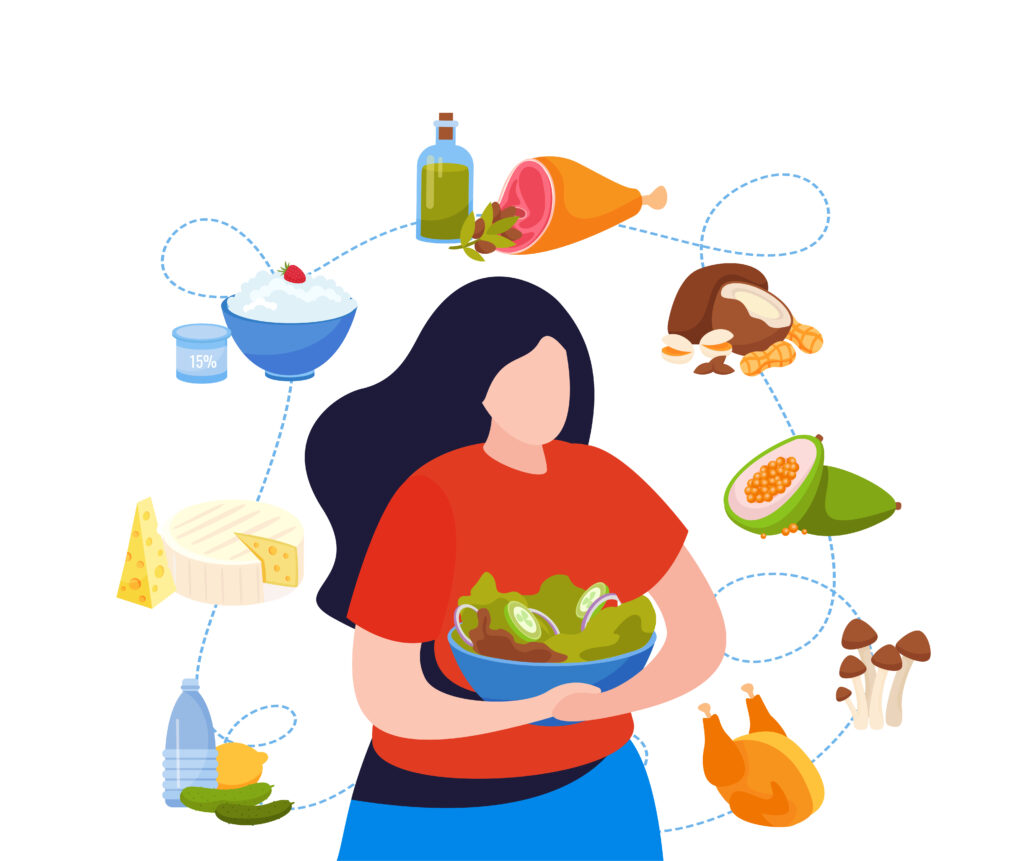
Table of Contents
About First trimester – Early pregnancy
The first trimester is a time of rapid change and adjustment for both mother and baby. It’s important to focus on self-care, maintain a healthy lifestyle, and keep regular appointments with your healthcare provider to ensure the best possible start for your pregnancy journey.
For first mothers, the first symptoms you can check whether your pregnant are missed period and sore nipples and frequent urination. Check for pregnancy test after 5- days of missed period. Some times it may delay pregnancy if you have irregular periods. Think Positively everything during this phase.. first trimester is crucial, need to be careful.
Try to ease your symptoms, have healthy lifestyle.. don’t overeat. Eat healthy and have better night sleep. Consult immediately doctor for medication. Folic acid is important to avoid spinal defects. Check out the myths and facts for more clarification regarding pregnancy doubts. share your personal experience for more information. suggest more topics for details.
First Trimester Symptoms:
Here are some common first trimester physical symptoms along with a brief explanation of each:
- Nausea and Vomiting (Morning Sickness)
- Often occurs in the morning but can happen at any time of day. Hormonal changes, especially increased levels of hCG and estrogen, are believed to cause this symptom.
- Fatigue
- Many women feel extremely tired during the first trimester due to the body working hard to support the developing baby and the increased levels of progesterone.
- Breast Tenderness and Swelling
- Hormonal changes can make breasts feel more tender, swollen, or sore, similar to the sensations experienced before a menstrual period but often more intense.
- Frequent Urination
- The growing uterus presses on the bladder, causing the need to urinate more frequently. Additionally, hormonal changes increase blood flow to the pelvic area.
- Food Cravings and Aversions
- Hormonal changes can lead to strong cravings for certain foods or aversions to foods you previously enjoyed.
- Mood Swings
- The fluctuation of hormones can cause significant mood swings, making you feel happy one moment and sad or irritable the next.
- Bloating and Gas
- Increased progesterone slows down digestion, which can cause bloating and gas.
- Constipation
- Progesterone also relaxes the muscles of the digestive tract, slowing down bowel movements and potentially leading to constipation.
- Increased Sense of Smell
- Many women report a heightened sense of smell during the first trimester, which can contribute to nausea and food aversions.
- Light Spotting
- Some women experience light spotting or implantation bleeding when the fertilized egg attaches to the lining of the uterus. This is usually lighter and shorter than a normal period.
- Dizziness and Lightheadedness
- Hormonal changes and increased blood flow can cause blood pressure to drop, leading to feelings of dizziness or lightheadedness.
- Headaches
- Hormonal surges, increased blood volume, and changes in circulation can contribute to headaches during early pregnancy.
These symptoms can vary in intensity and may not be experienced by all women. If you have concerns about any symptoms, it’s always a good idea to consult with your healthcare provider.
Emotional and Mental Adjustments
- Emotional Ups and Downs:
- The realization of pregnancy brings a range of emotions, from excitement and joy to anxiety and fear. Mood swings are common due to hormonal fluctuations.
- Bonding with the Baby:
- Many women start to feel a connection with their developing baby, even though physical changes might not be very noticeable yet.
Medical and Health Considerations
- Prenatal Appointments:
- Regular visits to a healthcare provider begin, with the first appointment often involving a thorough health history, physical exam, and confirmation of pregnancy through ultrasound or blood tests.
- Prenatal Vitamins:
- Taking prenatal vitamins, particularly folic acid, is crucial to support the baby’s development and prevent birth defects.
- Lifestyle Adjustments:
- Making healthy lifestyle choices, such as avoiding alcohol, smoking, and certain medications, is important to ensure a healthy pregnancy.
First Trimester Baby’s Week by Week Development
Detailed week-by-week guide to the first trimester of pregnancy, including key developments and the size of the embryo or fetus at each stage:

Week 1-2: Conception
- Week 1:
- This is considered the start of your last menstrual period (LMP). Pregnancy is calculated from the first day of your LMP, even though conception hasn’t occurred yet.
- The body prepares for ovulation, and an egg matures in one of the ovaries.
- Week 2:
- Ovulation typically occurs around the middle of the menstrual cycle. The mature egg is released from the ovary and travels down the fallopian tube.
- Fertilization occurs if sperm meets the egg, forming a zygote, which begins to divide and move toward the uterus.
Week 3: Implantation
- Development:
- The zygote becomes a blastocyst and implants itself into the uterine lining. This process can cause light spotting known as implantation bleeding.
- The blastocyst starts to develop into an embryo, and the placenta begins to form to provide nourishment.
- Size: About the size of a pinhead (0.1-0.2 mm).
Week 4: Early Development
- Development:
- The blastocyst develops into an embryo. The amniotic sac, which will house the embryo, and the yolk sac, which will provide early nourishment, start to form.
- Hormonal changes begin to produce symptoms like nausea and fatigue.
- Size: About 0.1 inch (2.5 mm), roughly the size of a poppy seed.
Week 5: Heartbeat Begins
- Development:
- The heart and blood vessels begin to form, and the heart starts to beat.
- The neural tube, which will become the brain and spinal cord, is developing.
- Major organs like the liver and kidneys start to form.
- Size: About 0.05 inch (1.25 mm), similar to a sesame seed.
Week 6: Facial Features and Limb Buds
- Development:
- Basic facial features start to form, including the eyes and nostrils. Small buds appear that will become arms and legs.
- The brain continues to develop rapidly, and the neural tube closes.
- The embryo’s heart beats at about 150 times per minute.
- Size: About 0.1 inch (2-3 mm), similar to a lentil.
Week 7: Major Organs Form
- Development:
- The brain, eyes, nostrils, inner ears, and limb buds continue to develop. The limb buds start to form hands and feet.
- The heart beats with a regular rhythm, and the circulatory system is fully functional.
- Size: About 0.5 inch (13 mm), similar to a blueberry.
Week 8: Moving and Growing
- Development:
- The embryo starts to move, although these movements are too small to be felt.
- Fingers and toes begin to form, and the face becomes more defined, with the formation of the upper lip and the tip of the nose.
- The neural pathways in the brain start to form.
- Size: About 0.6 inch (15-16 mm), similar to a kidney bean.
Week 9: Becoming a Fetus
- Development:
- The embryo is now called a fetus. All essential organs have begun to form, and the tail has disappeared.
- The heart has four chambers, and the external ears and eyelids are forming.
- The fetus can make small movements.
- Size: About 0.9 inch (22-24 mm), similar to a grape.
Week 10: Vital Organs in Place
- Development:
- The vital organs, including the kidneys, intestines, brain, and liver, start to function. The kidneys produce urine, and the liver makes red blood cells.
- Fingernails and hair start to develop.
- The brain continues to develop rapidly.
- Size: About 1.2 inches (30-32 mm), similar to a kumquat.
Week 11: More Complex Development
- Development:
- The head is about half the length of the body, but the body grows rapidly.
- The bones start to harden, and the skin is still translucent.
- External genitalia begin to develop but are not distinguishable yet.
- The fetus starts to make spontaneous movements.
- Size: About 1.6 inches (40-41 mm), similar to a fig.
Week 12: End of First Trimester
- Development:
- The fetus can open and close its fists and mouth. Reflexes such as sucking and swallowing begin to develop.
- The placenta is fully formed and takes over the production of hormones.
- The fetus’s intestines begin to move from the umbilical cord into the abdomen.
- Size: About 2.1 inches (53 mm), similar to a lime.
By the end of the first trimester, the fetus has completed the critical development stages, and the risk of miscarriage decreases significantly. This period is marked by rapid growth and fundamental development, laying the foundation for the baby’s health and growth in the coming trimesters.
First Trimester Pregnancy Diet Chart:

| IRON | CALCIUM | FOLIC ACID | PROTEIN | VITAMIN C | OMEGA-3 FATTY ACIDS | FIBER | |
| BENEFITS | Supports RBC Production and prevents anemia | Develop strong bones and teeth | Prevents neural tube defects | Supports the growth of fetal tissues | Enhances iron absorption | Develop fetal brain and eyes | prevent constipation |
| SOURCE | leafy green vegetables, beetroot, beans, Lean meats, poultry, fish, tofu, fortified cereals, dried fruits | leafy greens, tofu, almonds, and sesame seeds. fortified , leafy greens, tofu, almonds, and sesame seeds, Dairy products , plant-based milks(soy, almond) | Leafy greens (spinach, kale), beans, citrus fruits – oranges & grapefruit, banana, Sunflower seeds, Eggs, lentils, fortified cereals | lentils, nuts, seeds Beans, tofu, Lean meats, poultry, fish, eggs, dairy products | Citrus fruits – oranges, lemons, grapefruits Berries -straw berries, blueberries Bell peppers Broccoli Tomatoes | Fatty fish (salmon, sardines, mackerel), Flaxseeds Chia seeds Walnuts Omega-3 fortified eggs | |
| Dosage | 27 milligrams (mg) | 1,000 milligrams (mg) | 600-800 micrograms (mcg) | 75-100 grams (g) | 85 milligrams (mg) | 200-300 milligrams | 25-30 grams |
Daily Meal Plan:
| MONDAY | TUESDAY | WEDNESDAY | THURSDAY | FRIDAY | SATURDAY | SUNDAY | |
| Breakfast | Cereal with milk Banana | Scrambled eggs | Upma with veggies | Green Moong Dal dosa | Ragi Dosa | Paratha veggie | Sandwich |
| Morning Snack | Coconut water Pome granate | Banana Lemon juice | Peanut chikki Apple | Almonds Sweet potato | Dry fruits Berries | Badam milk Mango | Steamed veggies |
| Lunch | Rice/paratha Dal curry | Chicken Rice | Egg Rice | Veggie Pulav | Panner with rice | Green leaf curry with rice | low mercury fish fry with rice |
| Evening Snack | Orange Dryfruits | Apple Dry fruits | Pomegranate Dry fruits | Coconut water Dry fruits | Mango juice salad | grilled veggies Almonds | Chicken nuggets |
| Dinner | Chapathi with curry | Kichidi | Chicken curry with rice | Paratha with curry | vegetable rice | Panner with rice | Paratha with egg burji |
Additional Tips for pregnant women:
- Hydration: Aim for at least 8-10 glasses of water daily. Include fluids from soups, teas, and water-rich fruits and vegetables.
- Prenatal Vitamins: Continue taking prenatal vitamins as prescribed to ensure adequate intake of essential nutrients.
- Small, Frequent Meals: Eating small, frequent meals can help manage nausea and maintain energy levels throughout the day.
- Balanced Diet: Focus on a variety of foods from all food groups to ensure comprehensive nutrition.
Foods to Avoid in First Trimester Pregnancy:

- Raw or Undercooked Meat and Fish: May contain harmful bacteria or parasites.
- Deli Meats and Unpasteurized Products: Risk of listeria contamination.
- High-Mercury Fish: Avoid shark, swordfish, king mackerel, and tilefish.
- Raw Eggs: Risk of salmonella. Avoid raw cookie dough, homemade Caesar dressing, etc.
- Caffeine: Limit to 200 mg per day.
- Alcohol: Completely avoid during pregnancy.
This diet chart ensures that you receive balanced nutrition, supporting both your health and the development of your baby during the first trimester. Always consult with your healthcare provider for personalized dietary advice.
